Seeking the Dirty Bird
By Peter W. Merlin
The Big Find
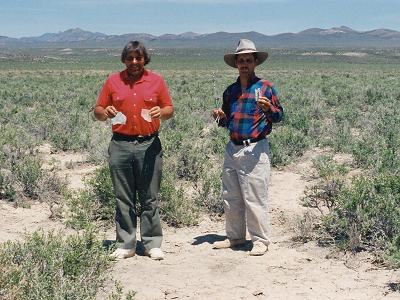
Tom Kinzel (left) and Peter Merlin hold pieces of the U-2 prototype (Article 341) at the crash site. Merlin and Kinzel discovered the location of the site on 12 May 1997 following an extensive search.
|
We decided to return the following day and try again. This time, we used a more scientific approach. Starting west of the campsite, we walked a tight grid pattern back and forth through the sage. Walking about two meters apart, we gradually worked our way east. After an hour or so, we had found nothing. It was very frustrating. We pushed on, working our way past the campsite. Suddenly, Tom called out. He had found a small piece of aluminum, about the size of a postage stamp. It looked like aircraft metal, but we couldn't be sure.
We continued our search, but our new enthusiasm quickly ebbed as we found nothing more. After a while, we decided to return to the Jeep, take a break, and discuss our options. Tom suggested that we walk downwind from the prevailing breeze to see if anything had blown to the east of the campsite. Within a minute or so, he spotted a piece of what appeared to be white nylon fabric. Next, I found a fragment of aluminum with green anticorrosive paint. This was definitely from an aircraft. Tom and I each soon had a handful of metal and Plexiglas fragments. We had definitely located the crash site.
The debris field was approximately the size of the airplane itself. Since the U-2 impacted in a flat spin, it did not spread debris over a wide area. The types of materials indicated the orientation of the aircraft when it came to rest. A patch of darker soil, containing burned and melted material, showed the location of the engine section. There had obviously been a small fire after impact. Cockpit debris indicated that the front of the U-2 ended up facing the riverbed. Debris spread out on either side represented the wings.
A thorough search of the impact site yielded pieces of the airplane's skin and internal structure. A few structural items were marked with Lockheed Skunk Works inspection stamps. Some pieces had part numbers indicating that they were part of the fuselage assembly. The most impressive item from the cockpit was part of the throttle grip. There were also some miscellaneous switches, lights, and bits of instruments. We also found pieces of the "wallpaper" RAM. Based on the location and the material evidence, we had conclusively located the crash site of the U-2 prototype. Further confirmation came in 1998 when the CIA released an official history of the U-2 program. It contained two interesting photos of the "wallpaper" and a picture of the crashed airplane at the impact site.
Recovered pieces of Article 341 (the scale marker is six inches long)
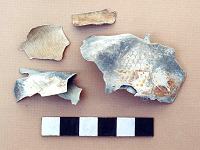
Pieces of aluminum skin from the underside of the U-2, with remnants of honeycomb from the radar-absorbent coating tested during Project RAINBOW.
|
|
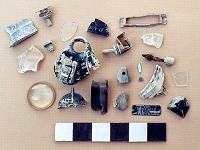
Cockpit debris from the U-2 prototype included toggle switches, pieces of instruments, panel lighting, and the throttle grip.
|
|
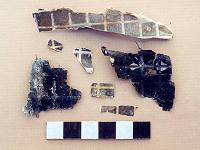
The external surface of the airplane's radar-absorbent coating was covered with a conductive grid. Because of the pattern, it was nicknamed "Wallpaper."
|
|
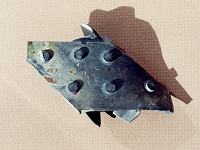
Structural part with number F32-29L, indicating that it is from the left side of the fuselage.
|
|
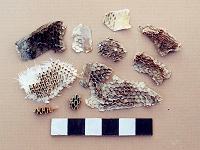
Fragments of honeycomb material from the radar-absorbent coating on the underside of the U-2.
|
|
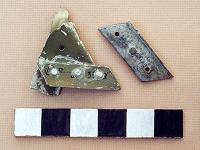
Structural parts from the right side of the fuselage, with part numbers and Lockheed Skunk Works inspection stamps.
|
|
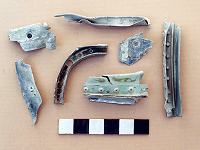
Pieces of aluminum structural components from the U-2.
|
|
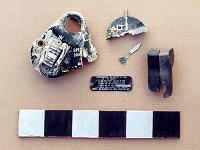
Detail of several items from the U-2 cockpit. Clockwise from left, Throttle grip, altimeter face, pointer needle from altimeter, trim power switch, data plate from Rate of Climb indicator.
|
|
Seeking the Dirty Bird Index:
© Copyright 1999-, Dreamland Resort. All rights reserved. Copyright Policy Privacy Policy Page last modified 08/04/2018
